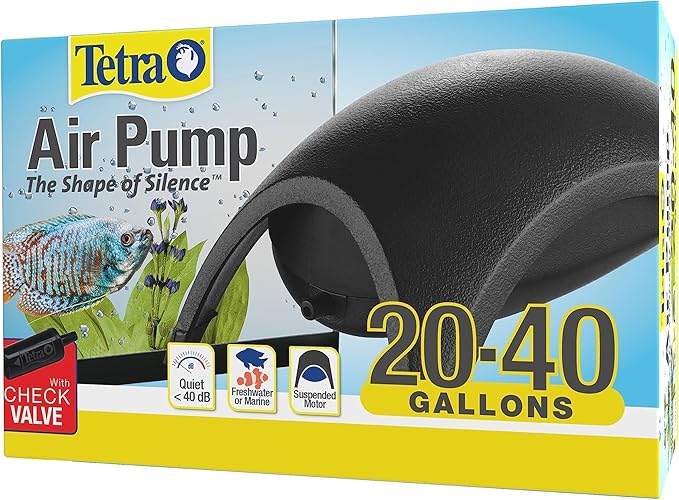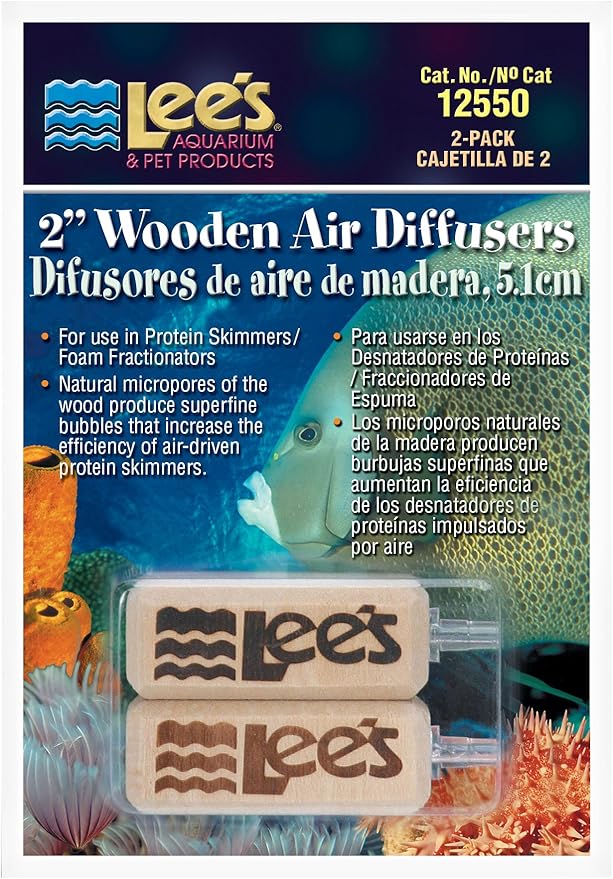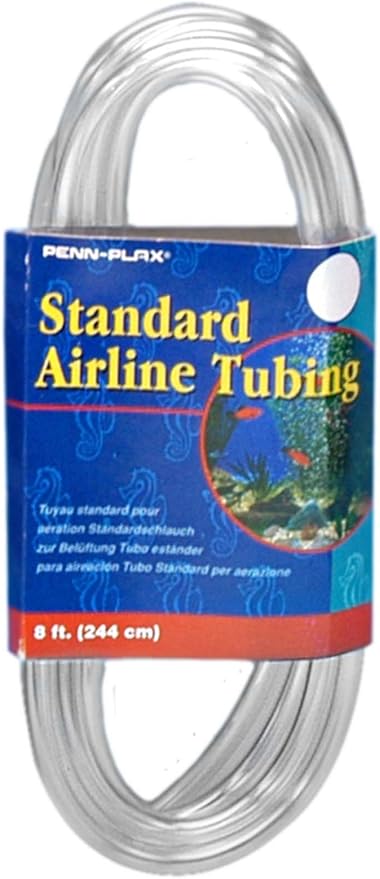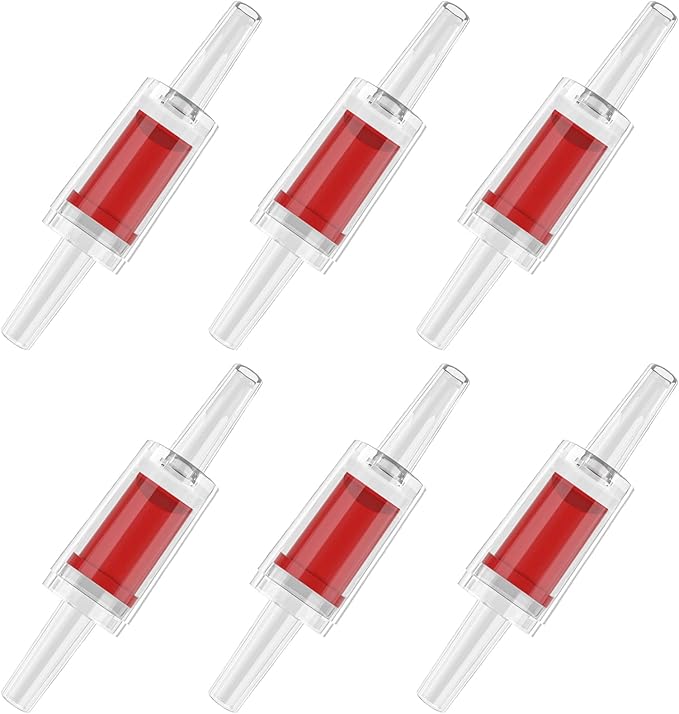Disclaimer: This page contains advertisements and/or affiliate links. We receive compensation from clicks and/or purchases made through these links. Though we may not have tested the specific product(s) mentioned, we do our best to recommend products that are beneficial to our visitors.
Micro Bubble Scrubbing in the Reef Tank
Last updated on November 17th, 2023

How to Use Micro Bubble Scrubbing to Clean and Stabilize your Reef Tank
Micro Bubble Scrubbing in the Reef Tank has a variety of benefits. Some of these benefits include cleaning your reef tank, better pH, and all of the advantages provided by a Protein Skimmer, directly in your aquarium. Simulating some natural waste removal that occurs in the ocean, micro bubble scrubbing may be one of the many secret weapons to maintaining a clean reef tank!

Micro Bubble Scrubbing in Nature
If you have ever gone to the beach, I'm sure you've seen how waves crash into the water, causing a bunch of foam that is pushed to the sand. Every time these waves flow through, it pushes a very strong flow under the surface. This cases debris and waste to move off of the sand bed, into the water column. As the waves crash down, it provides a large number of small bubbles under the surface.
These bubbles then help force the waste and debris up toward the surface. These waves and bubbles then push the waste to the beach. Removing it from the water. This can be seen with washed up trash, shells, dead reef creatures, etc. It's nature's way of removing trash from the water.
Reproducing Nature in A Reef Tank
I'm sure you are thinking, that's great, however, I don't want to wash up shells or have crashing waves in my reef tank. I agree! Nothing about that sounds like a good idea. HOWEVER! What if we could have the same benefits that would be found under the ocean, without the crashing waves? Now that sounds much better!
That is where Micro Bubble Scrubbing comes into play for the Reef Tank! Using powerheads and wavemakers, you can simulate the effect of the waves under the surface. I personally achieve this by using Ecotech MP40 set at 100% with either nutrient transport, or constant mode. This helps move the waste and debris from the sand bed or rocks into the water column.
Next, we need to provide the bubbles to help force the waste to the top of the tank. This is where Micro Bubble Scrubbing comes into play. Though we may not be washing anything up to the beach, we can push this waste toward the overflows, and into the sump where it can be filtered out using filter socks or a rollermat filter.
Using micro bubble scrubbing then helps replicate natures's debris removal, in a controlled, more targeted way. Though there are likely many more bubbles than in nature, it is because we are able to control the process within our reef tanks. Allowing us to take the parts that work, and use them to an extreme.
What is Micro Bubble Scrubbing in a Reef Tank?
Micro bubble scrubbing, also known as the bubbling method, appears to have originated by Elegant Corals in 2015. The concept itself is to fill the aquarium with micro bubbles. There are a variety of benefits, though micro bubble scrubbing is not widely accepted yet. This is because many people believe the bubbles will get trapped in coral polyps and/or fish's gills and cause death.
Though there is always a possibility, the likelyness is very low. Between the small size of the bubble, high flow, and only a couple hours of time, there is not a high chance of this happening in your reef tank.
Benefits of Reef Tank Micro Bubble Scrubbing
Though not the original purpose, the top benefit of Micro Bubble Scrubbing in saltwater aquariums is to act as a method of filtration. The easy way to think of it is that Micro Bubbling turns your entire aquarium into a protein skimmer. Though the bubbles are not as dense as a protein skimmer, this is the general idea.
The original intention, and another benefit of Micro Scrubbing Bubbles for Reef Tanks, is CO2 degassing. More commonly phrased as increasing pH. This was the original intention from Elegant Corals. This is also true of protein skimmers. By providing the air directly to the reef tank, you are able to remove the CO2 across the tank directly, rather than waiting for it to reach the filtration.
Facebook - Elegant Corals, LLC - July 22, 2015Elegant Corals "Micro Scrubbing Bubbles" Technique for the Reef System... :)
Allows the corals to release excess slime and waste...
Allows the coral membrane to breathe and allow for better osmosis and ion exchange with the water column...
Oxygenates the water and de-gasses excess CO2 in the water column out of the system. (Skimmers and a little ball of chaeto is not sufficient... sorry...)
We recommend 8 to 10 hours a day counter cycle for the first week, then 2 to 3 hours a day counter cycle to the display tank lighting to maintain a more consistent and stable pH level.
The correct pH greatly improves the calcification rates of all hard corals...
Oxygenation also assists in higher beneficial aerobic bacterial loads as well as decrease the bad anaerobic cyanobacteria that many hobbyists struggle with.
The micro bubbles also get under (with proper tank flow) dinos and the cyanobacteria and carry them to the over flow to be removed by an efficient skimmer.
Not just for gas exchange or CO2 degassing... part of the nutrient cycle/export system, as well... excellent water flow is needed and vital to prevent the mucus from a neighboring colony to suffocate or burn another. Quick removal with a turkey baster is suggested for stuck on stubborn mucus.
NOTICE: NO FILTER SOCKS IF YOU HAVE A TRUE WORKING REFUGIUM!!
If fighting dinos, cyanobacteria, or other Reef Tank Pests, we will be adding it to our "NOTES" section in the near future!
CHEERS!
CO2 Degassing and pH Stabilization
As noted by Elegant Corals, the one of the major benefits of micro bubble scrubbing is removing excess CO2 from the water. This CO2 is created from the exhaling of your fish and coral, very much like how us humans exhale CO2. The major difference is the CO2 from your fish is trapped in a "small" box of water, meaning it builds up much quicker.
Dr. David Koweek conducted a study while working toward his PhD. using bubble scrubbing in the ocean's reef and found benefits on a large scale as well. He also found that the CO2 concentration would increase after the sun set for the day. This means that just before the sun would rise, the CO2 concentrations would be the highest for that day.
Okay, I get it, we don't measure CO2 in Saltwater Aquariums, or do we? Higher concentrations of CO2 will cause the reef tank's water to become more acidic, meaning a lower pH. Many advanced reef keepers and coral propagators try to keep their aquarium pH around 8.0 - 8.4, if the water becomes acidic, this will drop toward the 7 range. This could cause coral growth to slow, as well as possibly lead to health issues for fish and invertebrates.
CO2 Degassing and pH Summary
I get it, that was a fairly large amount of information to take in. Long story short, fish and coral exhale CO2 in the water at night. CO2 concentrations in the water decreases the aquarium pH and can slow coral growth and become toxic for aquarium inhabitants. Micro bubbles, especially from outsude or through CO2 absorbing media, blasting through the reef tank helps remove this CO2 and helps stabilize pH in your reef tank.
Even if the only benefit were CO2 degassing, the simplicity and low cost of micro bubble scrubbing makes it worth the investment.
Nutrient Removal
Stabilizing pH is not the only benefit of micro bubble scrubbing in the reef tank. Another, and the reason I use micro bubbling, is to help remove waste from the aquarium. When filling the saltwater aquarium with these micro bubbles, uneaten food and other waste in the water column will get stuck to the bubbles and float to the top. This waste then flows down the overflow and is caught in your filter socks. Though the original concept says filter socks are not needed if your refugium is working properly; filter socks prevent the waste from reaching the refugium and prevents any additional nutrients.
You will notice that bubble scrubbing is very similar to a full-tank protein skimmer. It won't replace your protein skimmer, but it will help remove waste and prvent additional nutrients from entering your saltwater aquarium.
To supplement this nutrient removal, you may need to increase water flow to stir up detritus from the sand bed and rock surface. This is a common function in the Ecotech VorTech pumps, nutrient transport. Simply put, this mode moves the waste to the water column where the bubbles can help remove them.
Coral Mucus Removal
Corals produce a mucus to protect themselves, however this can trap debris amd even remain on the coral after its beneficial use. Similar to the nutrient removal above, micro bubble scrubbingd assists in removing this mucus. Once again, enhancing coral growth potential and overall health.
Setting up Micro Bubble Scrubbing in your Reef Tank
By this point, if you're not convinced that you should at least try micro bubble scrubbing in your reef tank, I don't know what will. So rather than trying to convince you more, I will just show you how to set up micro bubbling.
The setup for Micro Bubble Scrubbing in Reef Tanks is rather simple. Here is a list of what you will need:
- Wooden Air Stone
- Air Pump
- Airline Tube
- Airline Check Valve
- Cheap Timer Outlet
- Glass, Plexi, or Acrylic tops for the Tank (optional)

Step 1: Wooden Air Stone
Start by connecting the wooden air stone to the air tubing. Then place the air stone under the inlet to the return pump. Make sure to attach it to the pump, rock, or other fixed object using a cable zip tie or magnet to keep the air stone from getting sucked in to the return pump as well as keeping the bubbles going through the return pump.
If you are not using a sump, you can use cable zip ties to attatch the air stone to a power head inside the aquarium. This solution also works if you have multiple tanks and need more air than you can provide through the return pump. Personally, I have connect the air stones to an Ecotech VorTech MP40wQD and ran it at 100% while the air stone was on. This helped break up the bubbles further, making it more effective at bubble scrubbing my reef tank.
Step 2: Connecting the Air Pump
I HIGHLY recommend placing the check valve just past the location where the airline come out of the sump or tank. The check valve prevents flooding if a siphon occurs. Which can happen every time the air pump turns off. I know what you're thinking, I didn't think thus would happen either. Let's just say if you don't use a check valve, you'll need a mop. When a siphon occurs, there will be a lot of water lost and a lot of damage. So for less than $3, this will save you a lot of damage, money, and coral loss as well.
After the check valve, just connect the air pump and test it out! Your tank should be blasted with small bubbles. If the bubbles are not being sucked ito the return pump, you may need to adjust the location of the air stone until it pulls in all of the air.
Step 2b: Fresh Air?
The reason I encourage something like the Aqua-Lifter is because it has an inlet that lets you connect an air hose to decide where you want the air to come from. If the outdoor temperature is not too high or too low (Ideally in the 70-80 degree range) you can pull in fresh air to remove more CO2 and have better pH levels. If this is not the case (like most of us) then you can run the line to a different part of the room or even another room or CO2 absorbing media to pull fresh air from somewhere else. If you do not plan to do this, any other strong air pump should work, as long as you size the air pump appropriately for your reef tank.
Step 3: Set up the Timer
The final step is setting up the time to turn on the bubble scrubbing. The best time, the time with the highest CO2 concentration is in the water, is usually 2 to 3 hours before the lights turn on. Though you can determine this by what time your pH is the lowest. Initially you should aim to run the micro bubble scrubbing for at least 2 hours before the light come on to remove the CO2 from the tank.
BONUS: Remove Extra Waste
If your powerheads have a nutrient transport or cleaning mode that pulls waste off the bottom of the tank, rocks, and/or sand, pairing it with bubble scrubbing will remove even more waste! If you do the nutrient transport cycle at the same time as the bubble scrubbing, the first benefit is that the bubbles can help bring more debris to the top of the tank and into the sump where the filter socks or protein skimmer can remove it. Additionally, it can remove the CO2 more uniformly from the tank. Finally, doing this helps SPS corals shed their mucus better, leading to healthier corals.
Final Considerations - Optional Aquarium Tops
In addition to using a check valve to prevent flooding, there is one other major consideration. When using micro bubbles to clean your reef tank, there will be a lot of spray from the bubbles rising to the surface. This can lead to water or salt damage on the light or nearby walls, as well as higher humidity and things from the tank to become airborne. You can prevent this by adding glass tops on your tank. This will reduce any damage from the water spray and salt creep. You can purchase glass, plexi, or acrylic sheets from a local hardware store relatively cheap.
Equipment Needed:
References:
- Elegant Corals - Facebook - Original Post
- Advanced Aquarist - Air Bubbles To Improve Reef Water Chemistry

Conclusion
Micro Bubble Scrubbing in reef tanks provides multiple benefits. The main intention is to turn your entire aquarium into a protein skimmer for a short period of time. This removes debris from your reef for you. Additional benefits, much like a protein skimmer, include improved pH and allowing oxygen to enter your reef. It may not look as nice for a couple hours, but your water clarity will be nearly perfect after bubble scrubbing!
About the Author
John Krenzer

John is a Software Engineer with a passion for saltwater aquariums, as well as the founder and president of Reef Stable. He started in the aquarium hobby as a child with a 20 gallon freshwater aquarium. His interest in aquarium life grew and in 2008, John set up his first saltwater aquarium.
Today, John maintains an over 300 gallon reef tank system, consisting of a 120g reef and a 210g reef. These large tanks are contained within the same system, sharing a sump as a means to reduce total maintenance and increase total water volume.
John writes articles for the blog as a means to learn about more reef aquarium topics. These articles act as a reference for the readers as well as himself. John updates these articles frequently to provide additional information or make corrections as new information becomes available.
If you would like to request an article, tank tour article, or to collaborate, let me know via the











Social Media